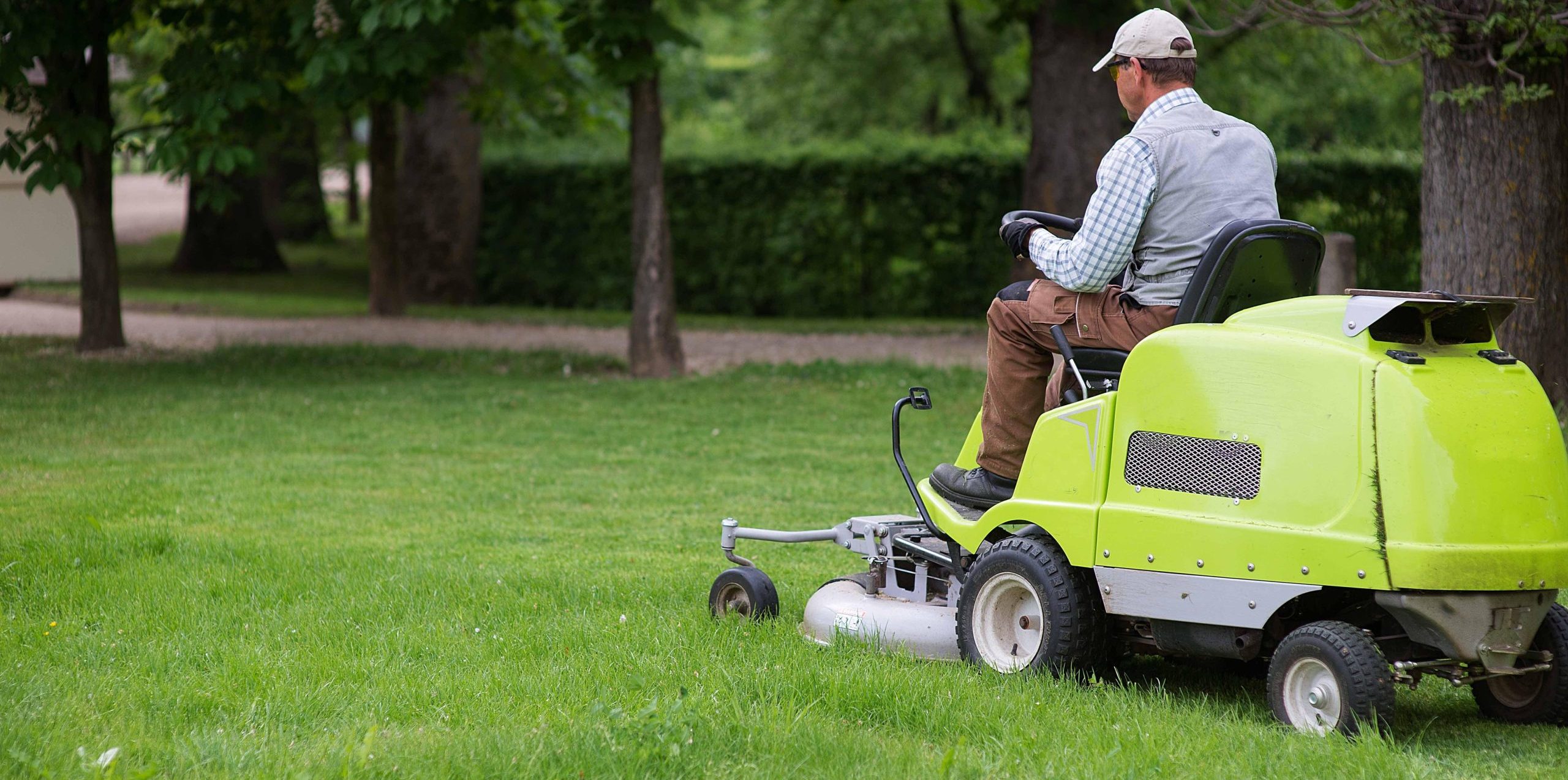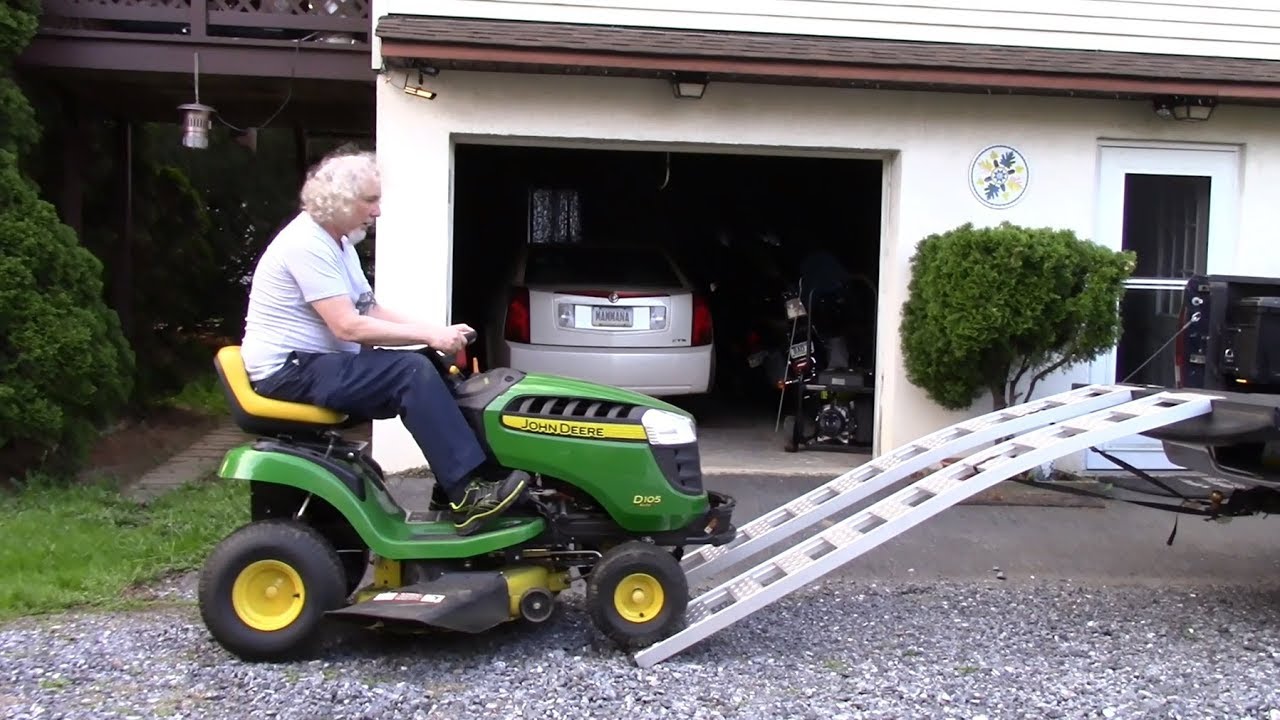To transport a riding lawn mower without a trailer, you can use a pickup truck with ramps or a professional lawn mower carrier. Transporting a riding lawn mower can be a challenging task, especially if you don’t have access to a trailer.
However, there are alternatives available that can help you move your mower from one place to another with ease. By utilizing a pickup truck with ramps or investing in a specialized lawn mower carrier, you can safely transport your mower without the need for a trailer.
We will explore these options and provide you with valuable tips on how to transport your riding lawn mower efficiently. So, let’s get started and find out the best methods for moving your mower without a trailer.

Credit: freedomheavyhaul.com
How to Transport a Riding Lawn Mower Without a Trailer: Step by Step Guide
Securing Your Riding Lawn Mower
To transport a riding lawn mower without a trailer, it’s important to secure it properly. Start by choosing the right location for transport to ensure safety and convenience. Before moving the mower, disconnect the battery and remove any attachments. Additionally, check the air pressure in the tires to make sure they are properly inflated for the journey.
Secure loose parts and ensure everything is in working order before hitting the road. By following these guidelines, you can transport your riding lawn mower without the need for a trailer, ensuring a smooth and hassle-free journey.
Loading And Securing The Riding Lawn Mower
Loading and securing a riding lawn mower without a trailer can be achieved by utilizing loading ramps or a sturdy surface. When positioning the mower on the loading area, make sure it is placed correctly. To ensure stability during transportation, securely fasten the mower using straps or tie-downs.
It is crucial to conduct a thorough check for any loose parts and secure them properly. This will prevent any potential damage or accidents while in transit. Taking these steps will help you transport your riding lawn mower safely and without the need for a trailer, providing convenience and peace of mind.
Alternative Methods For Transporting A Riding Lawn Mower Without A Trailer
Transporting a riding lawn mower without a trailer can be done using alternative methods. One option is to use a pickup truck or suv, along with a ramp or loading system. This allows you to safely load the mower onto the vehicle.
Once in place, secure the mower to prevent any movement during transportation. It’s important to consider the weight distribution and capacity of your vehicle to ensure safe transport. Another method is to use a utility trailer hitch. Attach the hitch to the vehicle and secure the mower on the hitch platform.
Be sure to maintain proper weight distribution and balance for a smooth and secure transport. Following these guidelines will help you transport your riding lawn mower without the need for a trailer.
Frequently Asked Questions Of How To Transport A Riding Lawn Mower Without A Trailer
How Do I Transport A Riding Mower?
To transport a riding mower, follow these steps: – clear the mower of any debris or attachments. – lower the cutting deck to its lowest setting. – engage the parking brake and turn off the engine. – use a ramp or trailer to load the mower onto a truck or trailer.
– secure the mower with ratchet straps or bungee cords. – drive slowly and cautiously, avoiding sudden stops or sharp turns. – unload the mower carefully using the ramp or trailer. – inspect the mower for any damage before using it again.
Remember, safety is paramount when transporting heavy equipment like riding mowers. Take your time and ensure that the mower is properly secured before hitting the road. With these steps, you can transport your riding mower with ease.
How Do You Manually Move A Riding Lawn Mower?
To manually move a riding lawn mower, follow these steps: disengage the mower blades, turn off the engine, and engage the parking brake. Position yourself behind the mower, bend your knees, and firmly grip the handles. Slowly begin pushing the mower by applying steady pressure to the handles.
Use your body weight to provide leverage and keep your movements controlled. Take careful steps while pushing to maintain balance. If you need to turn the mower, do so by pivoting on your back foot and using your body to change direction.
When navigating obstacles, lift the front of the mower slightly to avoid damaging the wheels or the mower deck. Remember to always prioritize safety and use caution when manually moving a riding lawn mower.
Can You Load A Riding Mower Into A Pickup Truck?
Yes, you can load a riding mower into a pickup truck. Follow these steps: 1. Position the truck: back the truck up to a level surface with ample space around it. 2. Prepare the ramp: attach a sturdy loading ramp securely to the truck’s tailgate.
3. Secure the mower: turn off the mower and engage the parking brake. Use straps or ropes to secure it to the truck, preventing movement during transportation. 4. Load the mower: slowly drive the mower up the ramp, ensuring the wheels stay centered on it.
5. Position the mower: ensure the mower is centered and stable in the truck bed. 6. Secure the mower: use additional straps or ropes to secure the mower to the truck bed, further preventing movement. 7. Close up: close the tailgate and ensure it is securely latched.
8. Drive safely: carefully drive, ensuring to take turns and bumps slowly to avoid shifting or damaging the mower. Remember to always prioritize safety and ensure the mower is properly secured before driving.
Can You Lay A Riding Lawn Mower On Its Side?
Yes, you can lay a riding lawn mower on its side to perform maintenance or repairs. However, it’s important to follow a few precautions to avoid damage. Firstly, make sure the mower is turned off and cool before tipping it over.
Drain the fuel and oil to prevent any leaks or spills. Support the mower securely to prevent it from rolling or falling. Take care not to damage the blades or other sensitive components. When finished, return the mower to an upright position slowly and carefully.
Refill the fuel and oil, and perform any necessary checks before starting the mower. Remember to always consult the manufacturer’s instructions or seek professional advice if you are unsure about any steps during the process. By following these guidelines, you can safely lay a riding lawn mower on its side for maintenance purposes.
Conclusion
As you can see, transporting a riding lawn mower without a trailer is not only possible but also quite manageable. By following the tips and techniques outlined you can safely transport your mower from one location to another without the need for a trailer.
Whether it’s using ramps, utilizing a pickup truck, or even disassembling the mower, there are plenty of options to choose from. Remember to always prioritize safety by ensuring your mower is securely fastened and properly balanced during transport. Additionally, consider the local regulations and legal requirements for transporting lawn mowers in your area.
With a bit of planning and creativity, you can conveniently transport your riding lawn mower without the need for a trailer. Happy mowing!

